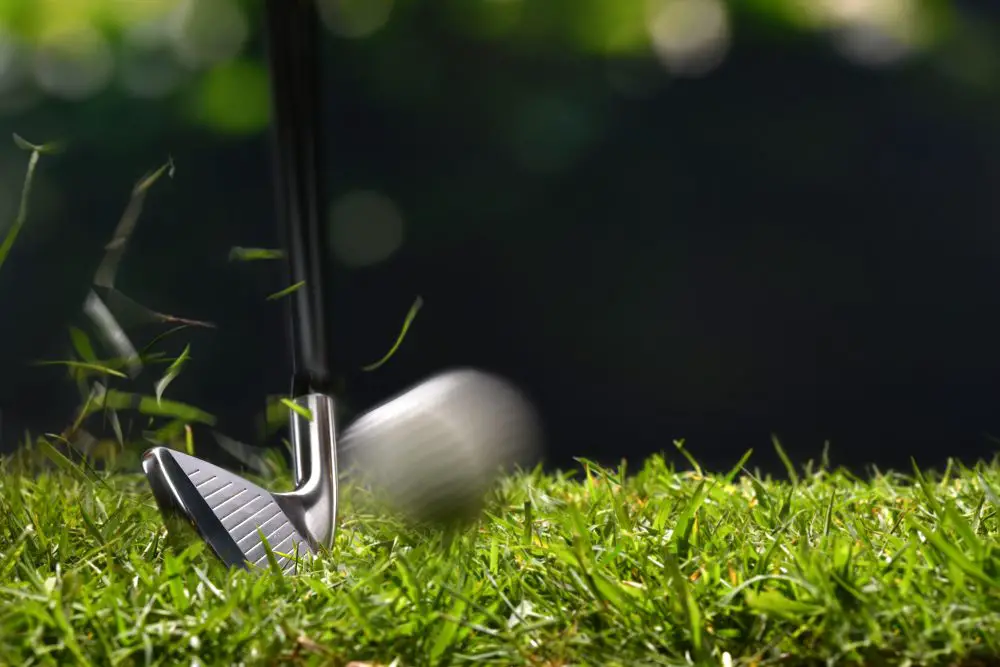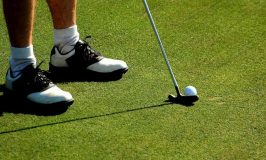
The history of golf is full of fascinating lore, and Gene Sarazen’s contribution to the sand wedge is a story to remember for sure. He is credited with inventing the modern sand wedge. However, there is some disagreement about whether he invented it from scratch or simply made some slight improvements.
One theory states that he gained knowledge about the flying principle of objects while flying with the one and only Howard Hughes. So, Sarazen thought that the same concept could be used to lift golf balls out of sand bunkers, and just like that, the bounce on wedges was born.
The bounce is that curved bit on the bottom of your wedge, and it’s a game-changer for your short game. It helps you avoid digging into the sand or turf when you’re hitting those delicate shots. Instead, it makes your club slide smoothly and gives you better control over where that ball goes.
So basically, bounce can rescue your ball from sandy traps and make those short shots a whole lot easier. So, if you’re serious about golf, take the time to master the bounce, and it’ll improve your game, for sure.
Bounce: Your Ally
If there’s one tip to improve your golf game and lower your handicap, it’s all about mastering that short game.
Around the green, turning three shots into two is the fastest way to see those scores drop. When it comes to the bounce on your wedges, the chunky, curved part, usually shaded in blue in pictures, is your bounce. Different wedges have varying amounts of bounce. Some have more, and some have less.
The bounce is literally your savior when it comes to short-game shots. It’s your savior against those frustrating fat and thin shots. So, instead of digging into the turf like a shovel, the bounce lets your wedge kind of glide and bounce off the ground.
But if you don’t get how to use the bounce, it’s like having a superpower but not knowing how to use it. Your wedge becomes a digging tool, and that’s a recipe for disaster when you’re trying to finesse those shots around the green.
So, the bottom line is, if you want to level up your game, get to know your wedge’s bounce. It’ll make your short game a whole lot smoother, and you’ll be turning those 3-shots into 2 like a pro in no time.
Way to Get Better at Bounce
- Grab your trusty sand wedge and hold it so the shaft is standing upright and gently rest the club head on a table.
- Notice how the leading edge (that’s the sharp front part) is slightly off the table, and the bounce part is making contact with the table surface.
- Now, tilt the shaft forward a bit, like you’re leaning it towards the table.
- With this, the leading edge will touch the table, and the bounce will hang out in the air.
How Does Bounce Makes You Better at Wedges
When you let the bounce do its thing, your club slides gracefully along the ground collects the ball, and sends it on its way. No digging into the turf, no messy divots, and definitely no short-game disasters.
The best part is you can even strike the ground behind the ball a bit, and you’ll still get a decent result. But, if you start using the leading edge to dig, you are in for big trouble. That’s when you take a big, unwanted chunk of turf with your shot, and soon, you’ll be doing that dreaded flipper dance, sending balls bouncing across the green because you’re scared of digging in.
So, practice smacking that bounce on the turf. You can even do it without a ball. Just make sure that you get the feel of that bounce (and remember, not the leading edge) hitting the ground. If you have been hitting fat shots, it’s time to retrain yourself.
Trust that hitting the ground with the bounce will never, ever result in a fat shot.
Final Thoughts
Avoid going overboard with shaft lean as much as you can because over-the-top shaft lean lets you put the ball way back in your stance and push your hands forward. Instead, you need to place the ball right in the middle of your stance, have the shaft more upright, almost like it’s standing tall, and keep your hands in front of the ball. Now, the bounce is your ally.
You can also try a fun experiment, like try opening the club face a bit. When you do that, you are actually exposing even more bounce. The more open the face is at the address, the more bounce you’ve got to work with.
Always remember that bounce is your ally, and keep saying no to digging and yes to smooth, bounce-powered shots.


Leave a Reply